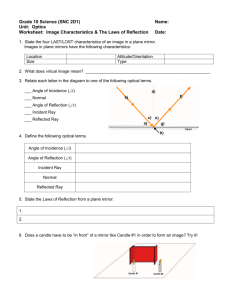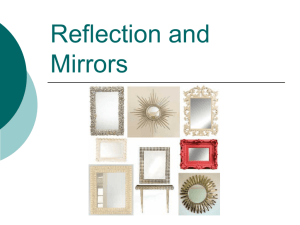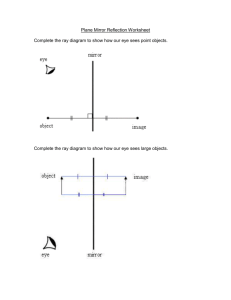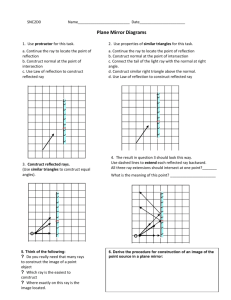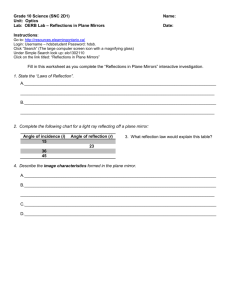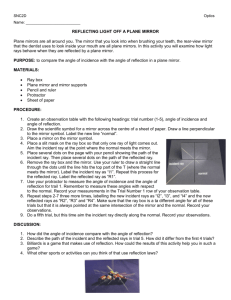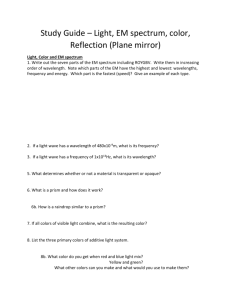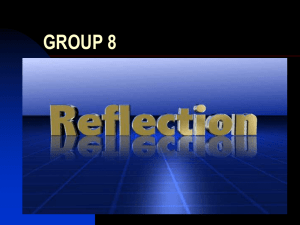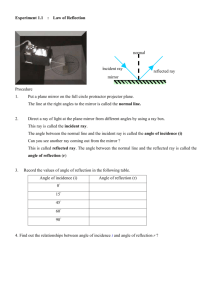Geometrical optics
advertisement
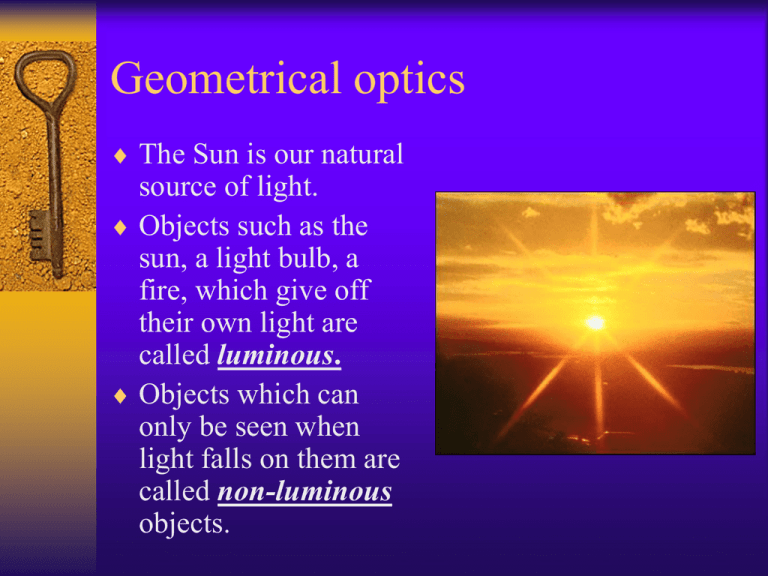
Geometrical optics The Sun is our natural source of light. Objects such as the sun, a light bulb, a fire, which give off their own light are called luminous. Objects which can only be seen when light falls on them are called non-luminous objects. Geometrical optics is the study of how light rays interact with matter. In order to understand how light behaves it is necessary to understand some of the properties of light. Light travels in straight lines. Light rays, beams. The fact that light travels in straight lines explains the formation of shadows as well as the fact that we are unable to see around corners. In our study of optics we represent a ray of light as an arrow. Several arrows drawn together represent a beam of light. Parallel Beam Converging Beam Diverging Beam Reflection of Light When light strikes an object some of the light is absorbed and some bounces back. The bouncing of light off an object is known as reflection. The reflection of light can either be regular reflection or diffuse reflection. Diffuse reflection! Most objects reflect light in a diffuse manner which means that the light is reflected in all directions. Such an object can be seen when viewed from any direction. Light rays Object Objects which are perfectly smooth or polished will reflect light in a regular Regular reflection! manner. Light which is reflected in Light rays this way will bounce back from an object at one particular angle or in one particular direction. Objects which reflect light Object in a regular manner are general called mirrors. Mirrors can either be flat (plane) or curved (spherical). Ray diagrams. We can use simple diagrams to explain how light is reflected, called ray diagrams. Ray diagrams help us to describe how images are formed by both plane and spherical mirrors. The ray of light striking the mirror is called the incident ray The ray of light reflected is called the reflected ray. The point where the incident ray strikes the mirror is called the point of incidence. A line drawn at right angles to the mirror at the point of incidence is called the normal, ‘N’. The angle between the incident ray and the normal is called the angle of incidence, ‘i’.. The angle between the reflected ray and the normal is called the angle of reflection, ‘r’. The Laws of Reflection When light is reflected from the surface f a plane mirror; The incident ray, the normal and he reflected ray all lie in the same plane. The angle of incidence ‘i’ is equal to the angle of reflection ‘r’. N Reflected ray Incident ray i r i=r Images formed by plane mirrors. The image formed by Object Virtual Image a plane mirror will be 1. A virtual image 2. The same distance behind the mirror as the object is in front of the mirror 3. Laterally inverted, (reversed left to A virtual image is one formed right). by the apparent intersection Page 10 of light rays. Uses of plane mirrors. Because of ‘lateral inversion’, the practical uses of plane are limited. Emergency vehicles will print names right to left so that when viewed in a rear view mirror they can be read properly, i.e. left to right. Plane mirrors are used to view one own reflection. The periscope. The periscope is an instrument used to view around obstacles. Two plane mirrors are placed at 45º and used to reflect light in a regular manner. Submarines, sports events. Locating images produced by plane mirrors. The apparent movement of one object relative to another due to the motion of the observer is called parallax. The object which is farthest away moves with the observer. No parallax occurs if the two objects are at the same point. The method of no parallax is used to locate the image formed by a plane mirror.
